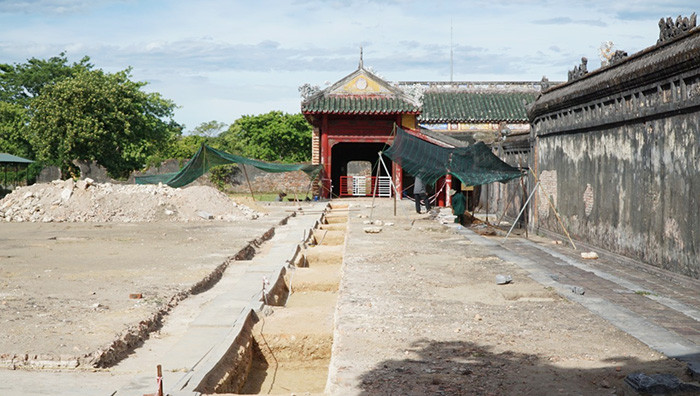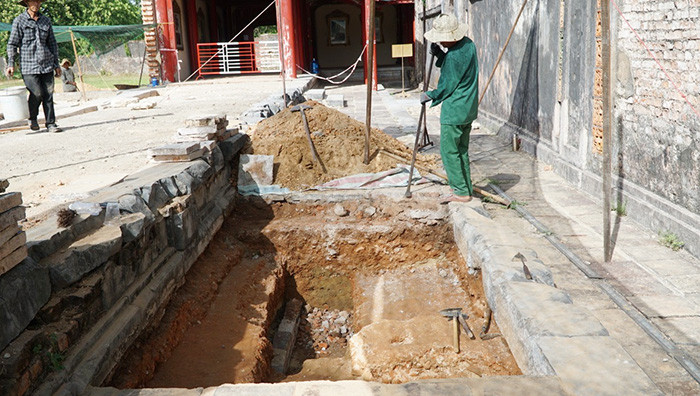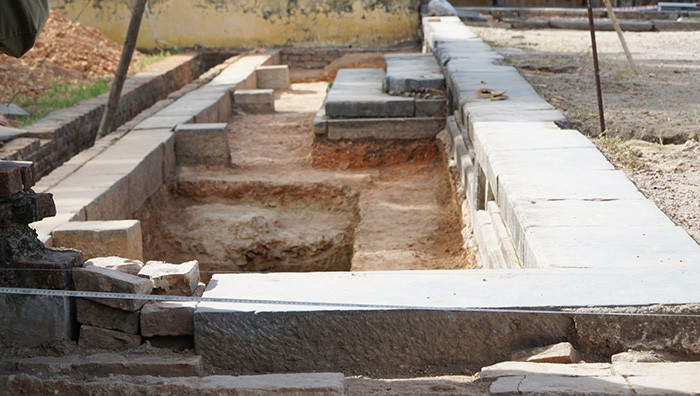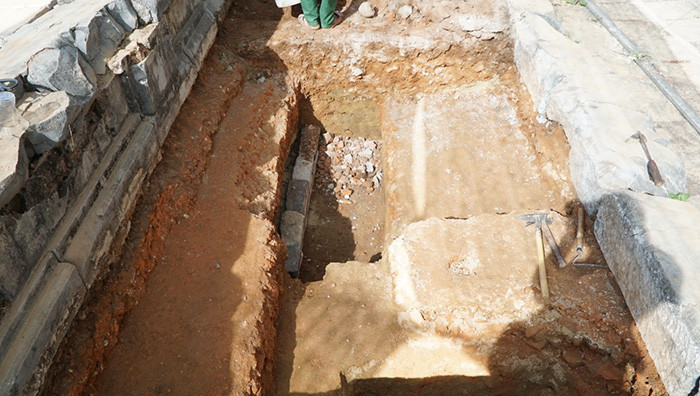Inside the archaeological excavations, researchers discovered traces of the foundation of Can Chanh Palace - one of the main and most important structures inside Hue Imperial City, built nearly 220 years ago.
On August 1, the Hue Monuments Conservation Center said that the Vietnam National Museum of History is coordinating with the Center to conduct archaeological excavations at the Can Chanh Palace relic (Hue Imperial City).

Can Chanh Palace was completely destroyed by war, only part of the foundation remains.
Can Chanh Palace was built in 1804 under King Gia Long of the Nguyen Dynasty. This is one of the main and most important structures inside the Hue Imperial City.
Can Chanh Palace is located on the sacred axis of Hue Imperial Citadel, along with important constructions such as Ngo Mon Gate, Thai Hoa Palace, Dai Cung Gate, Can Thanh Palace, Khon Thai Palace, Kien Trung Palace...

Authorities conduct excavations to obtain data for assessment and restoration.
During the Nguyen Dynasty, Can Chanh Palace was the workplace of the kings and the venue for important parties and ceremonies. Here, the king would hold court four times a month on the 5th, 10th, 20th and 25th of the lunar calendar.
In 1947, due to the war, the Can Chanh Palace relic was completely destroyed, leaving only the foundation. According to documents, before being destroyed, the Can Chanh Palace had a structure including: the main palace had 5 compartments and 2 double wings, the front palace had 7 compartments and 2 single wings.

The excavation area is about 200 m2 wide.
Previously, in 2021, the People's Council of Thua Thien Hue province passed a resolution approving the investment policy for the project "Renovation, restoration and embellishment of Can Chanh Palace". The project has a total cost of nearly 200 billion VND.
The archaeological activities aim to serve as a basis for research and development of a plan for the restoration and rehabilitation of the Can Chanh Palace relic according to the proposed resolution.

Revealing traces of the foundation of the Can Chanh Palace relic
According to a representative of the Vietnam National Museum of History, the archaeological excavation of the Can Chanh Palace relic lasted more than a month with a total area of over 200 square meters.
Currently, the archaeological excavation work has been basically completed. It is expected that the archaeological excavation will be completed by the end of this week. Next will be the editing and research activities and by the end of August 2023, there will be initial results.
Over the past month, through archaeological excavation activities, the forces at the site have collected many pieces of ceramics and bricks. In addition, in the excavations, traces of the foundation of the Can Chanh Palace relic have also been discovered.
According to the leader of the Hue Monuments Conservation Center, the archaeological excavation of Can Chanh Palace is an important basis for developing a plan to restore and renovate this relic in the coming time.
The Center is continuing to compile images and documents about Can Chanh Palace through many archival sources, including photos taken by the French.
According to Vietnamnet